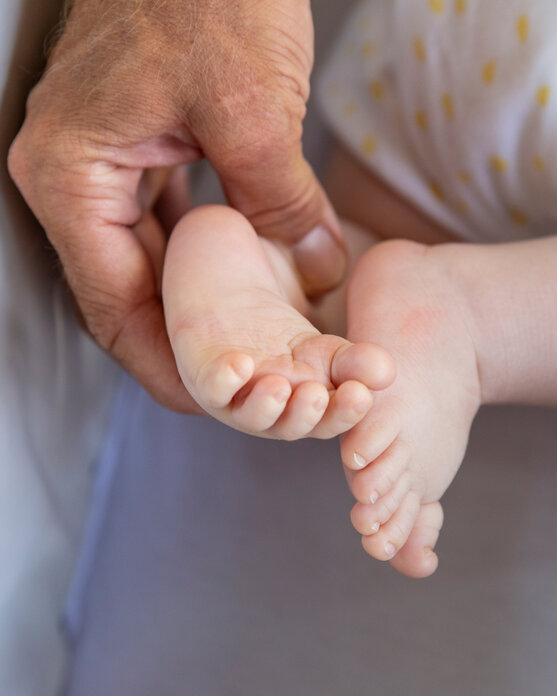Forefoot turned inward
Pigeon toe
One of the most common foot malpositions in infants is pigeon toe (lat. Pes adductus). The inward-turned forefoot gives the entire foot the shape of a crescent. The heel either remains unchanged or kinks inwards. Pain is usually not caused by pigeon foot, which usually occurs on both sides. However, the misalignment of the feet can lead to a gait that is turned inwards sharply.
Cause:
In addition to hereditary factors, this foot deformity often occurs in the last weeks of pregnancy due to a lack of space in the uterus.
Treatment:
Pigeon toe is usually completely harmless and self-correcting as the child grows. If this is not the case, conservative (i.e. non-operative) measures can help. We successfully provide affected children with orthoses which gently guide the foot into the right position.


Irmi is 15 months old. About half a year ago she already made her first attempts to walk. Because her front feet are turned slightly inwards, Irmi has been wearing lower leg orthoses for 3 months. These aids prevent her from having problems with an inwardly turned gait later on.
An orthosis is used to stabilize, relieve, immobilize, guide or correct limbs. This prevents or corrects incorrect postures and strains.
When choosing orthotic shoes, it is important for the combination of orthotic and shoe to be right for the purpose and for the desired effect of the treatment to be achieved. There are numerous models with different designs.





